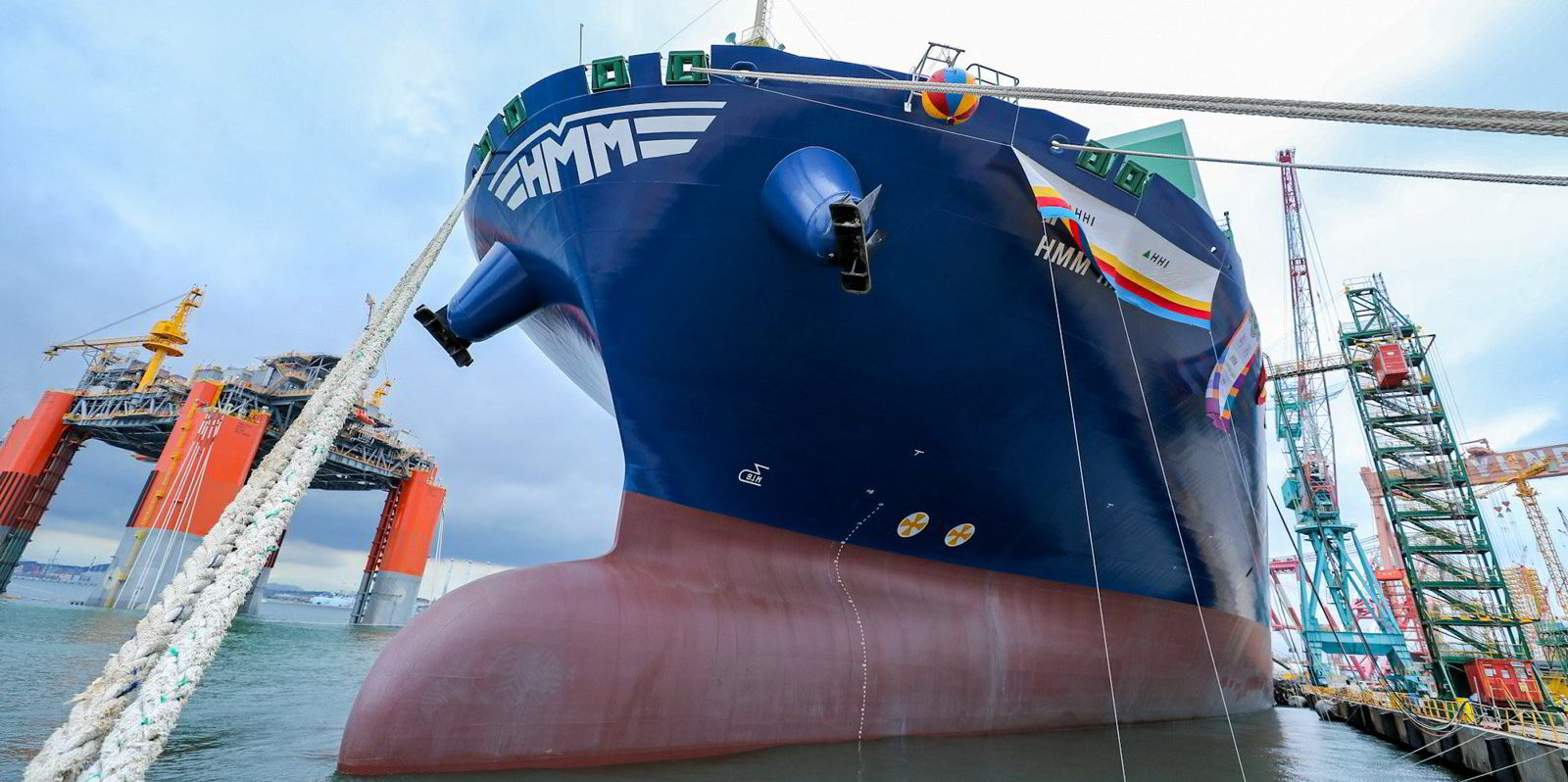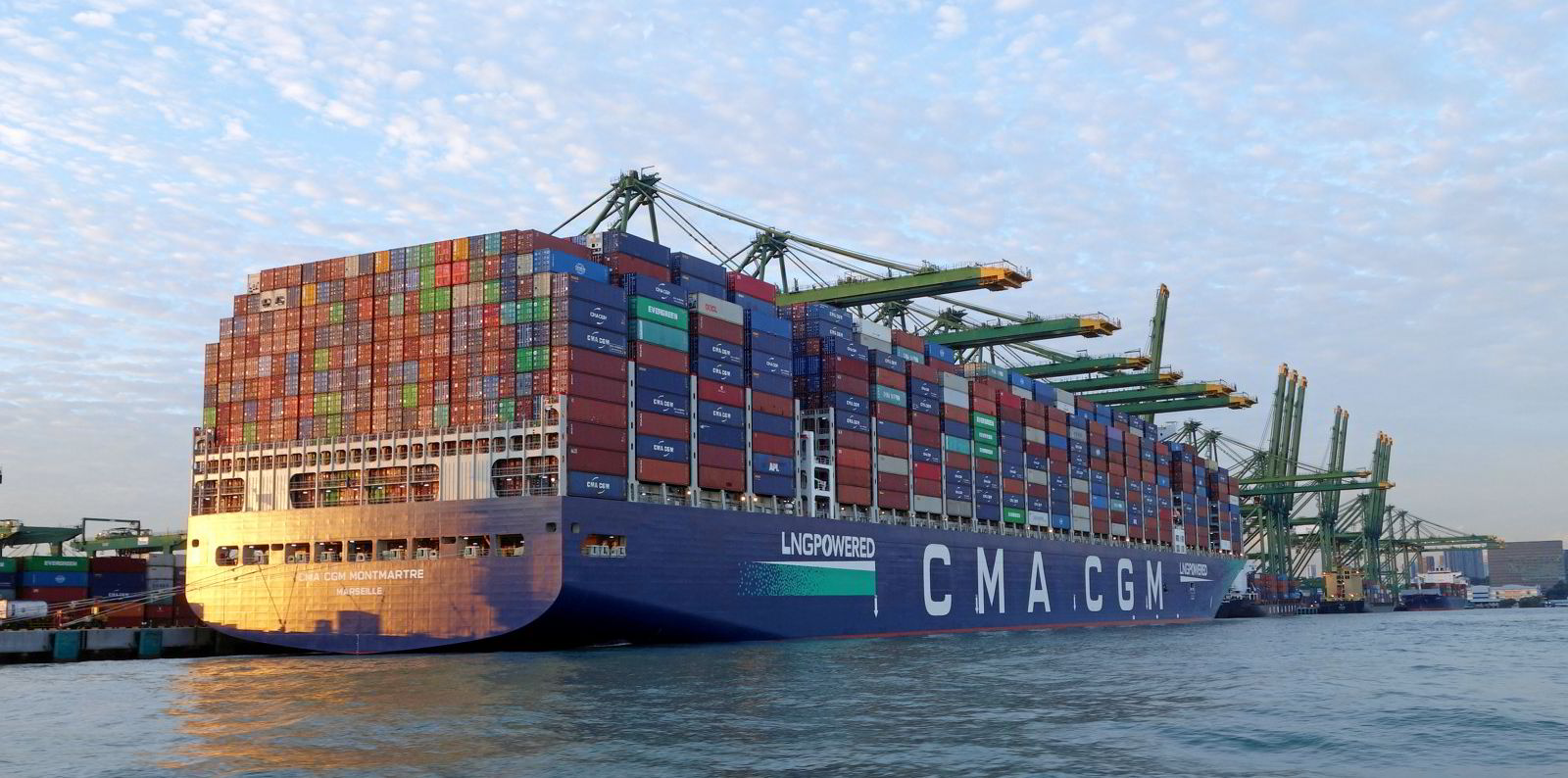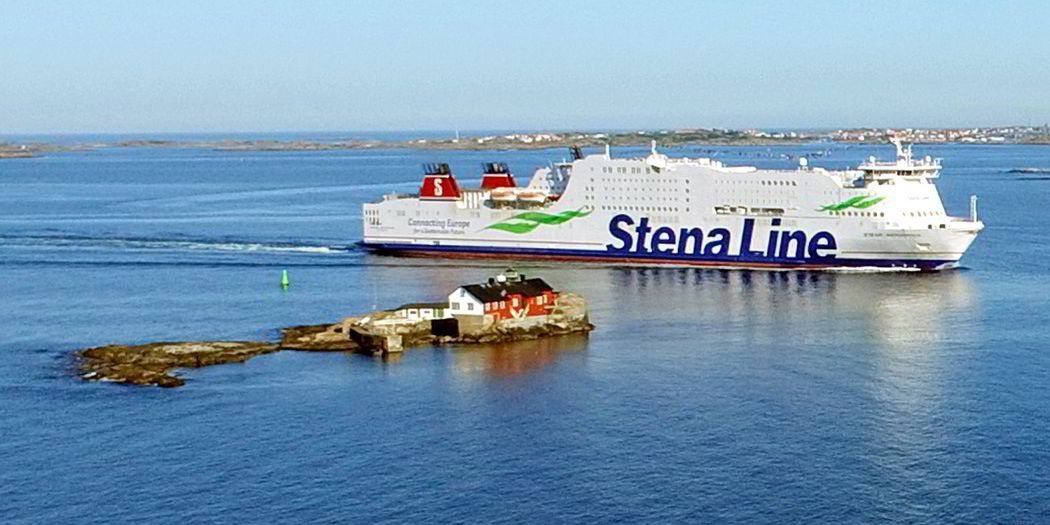The percentage of “alternative” propulsion container ships in the orderbook has risen above 40% for the first time.
The increase follows a spate of methanol dual-fuel orders that are poised to overtake LNG in terms of capacity ordered for the first time, according to Alphaliner.
LNG dual-fuel boxships account for nearly 30% of the orderbook, with 198 ships of 2.31m teu.
That is LNG’s highest proportion to date, and is up from a 25% share of the orderbook 12 months ago, the analyst notes.
But it is the rapid growth in methanol units that has driven the greatest increase in green orders.
The tally of methanol dual-fuel container ships now numbers 68 ships of 930,000 teu — an increase to 12% of the orderbook by capacity, up from less than 1% a year ago.
Carriers are rejecting fuel oil, with conventional propulsion representing just 8% of orders by capacity so far this year.
“The figures show the green revolution in container shipping is now firmly underway, with carriers using huge cash deposits to remake their fleets for the energy transition,” says Alphaliner.
Conventional dominates
Despite the increase, green tonnage still represents a fraction of the existing fleet.
LNG dual-fuel ships account for 2.2% of the fleet on the water, while the first methanol dual-fuel units will not be delivered until 2025.
The remaining 97.8% of the fleet is still powered by conventional fuel oil, of which one-third are scrubber-fitted.
The tally of methanol-fuelled ships is rising after South Korean liner operator HMM this month ordered nine 9,000-teu dual-fuel vessels to be built at Hyundai Samho Heavy Industries and HJ Shipbuilding & Construction.
CMA CGM is said to be planning to spend $1bn on a series of six methanol-powered 16,000-teu newbuildings at Chinese state-owned Jiangnan Shipyard.
CMA CGM already has 18 methanol-powered large container ships on its orderbook: six 15,000-teu newbuildings at China’s Dalian Shipbuilding Industry Co and a dozen 13,000-teu vessels at Hyundai Samho Heavy Industries in South Korea.
More liner companies are ordering methanol-fuelled newbuildings because they are cheaper to build than those designed for LNG, as there is no need for expensive cryogenic bunker tanks and fuel gas handling systems.
Methanol is said to be easier to handle and more widely available. It can also be stored and transported as a liquid without the need to cool or keep it under pressure.
The downside is that methanol is a lower-energy fuel than LNG, so larger quantities are needed to achieve the same power output.






